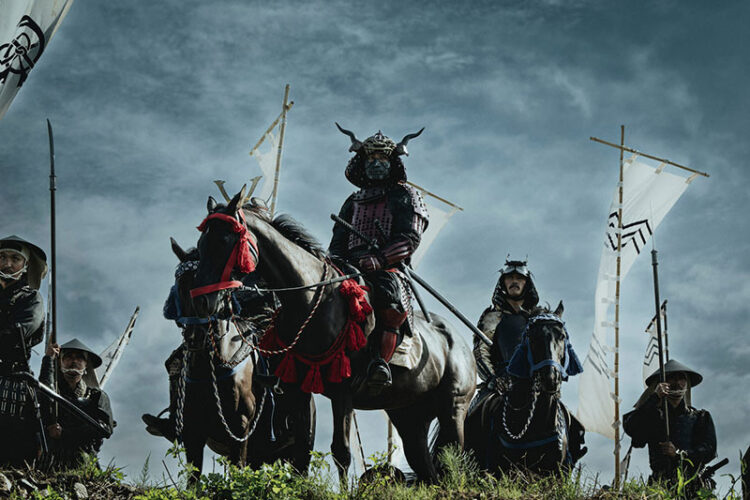The Forgotten Origin
In the 7th century, Tang Dynasty China revolutionized blade-making with baogangfa (包钢法, “laminated steel”): a technique fusing hard high-carbon steel for sharpness with soft low-carbon iron for resilience. This method produced the legendary tangdao (唐刀)—straight blades capable of piercing samurai armor. When Japanese envoys brought this technology to Kyoto during the Nara period (710–794), they ignited a metallurgical revolution. Yet by the time of China’s Song Dynasty (960–1279), baogangfa was abandoned as “obsolete,” replaced by cheaper jiagang (夹钢, “inserted steel”) mass production. Ironically, Japan elevated baogangfainto its national craft, creating the iconic curved katana. How did a technology discarded in its birthplace flourish abroad for a millennium? The answer lies in war, class, and cultural divergence.
Technical Divergence: Why China Abandoned Perfection
China’s shift from baogangfawas driven by three factors:
- Military Economics: Song Dynasty strategists prioritized equipping 1.25 million soldiers. Jiagang blades—inserting a steel edge into an iron core—could be produced 10x faster than laminated swords. A Song-era tangdao took a year to forge; a jiagang saber required weeks.
- Resource Constraints: China’s iron mines yielded abundant but low-quality ore. Folding steel to remove impurities (bailian gang, 百炼钢) consumed 60% more charcoal than jiagang, straining state budgets.
- Cultural Shift: Neo-Confucian scholars disdained martial arts. Blades became utilitarian tools, not art. As Ming general Qi Jiguang lamented: “Common soldiers’ swords break like twigs—they’re farm tools, not weapons.”
Table: Chinese vs. Japanese Swordcraft Evolution
| Era | China | Japan |
| Tang (7th–10th c.) | Baogangfamainstream | Adopts baogangfa |
| Song (10th–13th c.) | Jiagangreplaces baogangfa | Refines curvature via sori |
| Edo (17th–19th c.) | Hybrid Manchu-Arab designs | Baogangfastandardized |
Japan’s Counterintuitive Embrace
While China optimized for quantity, Japan’s samurai elite demanded quality:
- Class Prestige: Samurai treated swords as soul symbols (tokonoma, 床の間). A 14th-century katana by master smith Masamune could cost 1,200 koku of rice—enough to feed 100 people for a year. Baogangfa’s 15,000-layer lamination created shimmering hada (grain patterns), proving lineage and status.
- Material Adaptation: Japan’s iron sand (tamahagane) contained harmful sulfur. Folding steel 20+ times dispersed impurities, while baogangfa’s soft core absorbed shock—critical for curved blades prone to snapping.
- Political Lock-in: Tokugawa shoguns (1603–1868) mandated swords as samurai-exclusive identifiers. With warfare banned, smiths competed artistically, perfecting baogangfa as “frozen performance art”.
Cultural Crossroads: Trade, War, and Imitation
Despite technological divergence, exchanges continued:
- Song Dynasty Irony: Chinese merchants paid gold for Japanese “demon blades” (nihontō), celebrating their beauty in poetry. Ouyang Xiu’s Japanese Sword Song (1060s) praised blades that “cut jade like mud,” yet Song armorers rejected their design for being too fragile against Jurchen cavalry.
- Ming-Qing Hybridity: After battling wakōpirates, Ming general Qi Jiguang fused katana curves with Miao broadswords to create the miaodao (苗刀). Qing emperors commissioned “Japanese-style” sabers — like the 1728 wodao (倭刀) ordered by Yongzheng—with dragon engravings but jiagang cores.
- Reverse Flow: By 1750, Ryukyu (Okinawa) envoys sold Japanese swords to Beijing as “tribute,” while Qing craftsmen adopted terms like tsuba (guard) as hushoupan (护手盘).
The Modern Reckoning
Japan’s baogangfa survived industrialization through cultural sacralization:
- Meiji Rescue: When Western firearms made swords obsolete, the 1871 Preservation of Antiquities Act funded smiths like Gassan Sadakazu. “Living National Treasures” (ningen kokuhō) now receive state stipends to hand-forge katanas.
- China’s Lost Legacy: Only three Tang blades survive in China—all excavated from waterlogged tombs. Most decayed in soil, their laminated steel disintegrating. Meanwhile, Japan preserves 55 Heian-era tangdao, including the 7th-century Hōki Kokubunji Sword.
“China invented the technology; Japan gave it a soul. One sought utility, the other pursued perfection—neither was wrong, but only reverence endured.”⚔️
Conclusion: The Double-Edged Lesson
The baogangfa paradox reveals a universal truth: technologies thrive not by “advancement,” but by alignment with cultural values. Where China’s pragmatism birthed efficient armies, Japan’s artistry turned steel into heirlooms. Today, as katana-forging requires state certification and a year’s labor per blade, while Chinese factories mass-produce alloy machetes, both paths endure—testaments to how societies choose their own sharpness.













